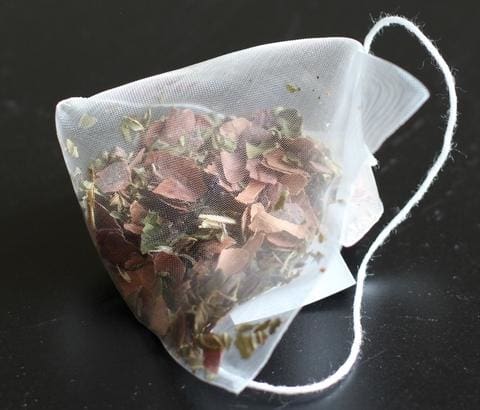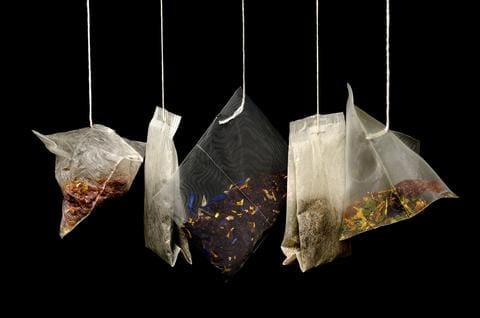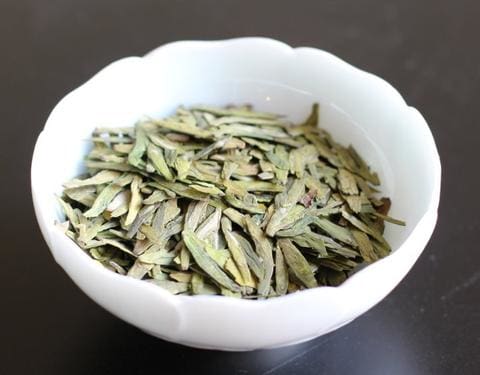
The History of Tea Bags
For the past several decades, we have lived in a culture of convenience. Contributing to this trend has been the emergence of the tea bag.

The use of tea bags began at the dawn of the 20th century. It may come as a surprise to hear that they were not initially designed for the purpose of infusing tea at all, if at any rate legend is to be believed! According to one popular account,[i] it was a famous New York merchant named Thomas Sullivan who specialized in coffee and tea imports who is responsible for this accident. Sullivan was busy shipping samples of his teas to his customers, and he used these silken sachets to store the tea. Upon receiving the samples, the recipients assumed it was for infusing the tea, and so they dropped the silken bags of tea into their tea pots to infuse it!
It is an interesting account if true, and it wouldn’t be the first time something was invented by accident.[ii] However, not all accidental inventions are necessarily for the better, and in this case, it was solving for a problem that didn’t have to exist.
There’s another account of the origin of the tea bag that sheds some insight into why we turned to them in the first place. An article in Time Magazine[iii] explained that two women in 1901, Roberta C. Lawson and Mary Molaren, filed a patent for something called a “tea leaf holder,” which was a bag in which the tea can be placed for the purpose of infusion. The problem, as they saw it, was that if you place your leaves in your teapot, the leaves end up in your cup or your mouth! By placing the tea leaves in a bag, it allowed the tea to infuse in the pot without pouring out through the spout.

In both stories, the tea bags were placed in tea pots to help infuse the tea. In addition to preventing the leaves from ending up in the cup, the tea bags also allegedly made cleanup easier. Instead of digging the leaves out of the teapot, the marketing pitch was that one could simply take the bag and toss it.
Such marketing did not become aggressive until the 1950s due in part to a shortage of raw materials during the World Wars, but also because they weren’t immediately as convenient as was supposed. This entertaining Lipton ad from 1952,[iv] for example, explains that these newly engineered tea bags have strings that can’t tangle and bags that don’t break, evidently problems that were experienced by tea bag users. What is more, “experts” claim that it makes the tea taste better, failing to clarify that they mean it tastes better relative to tea in the tea bags from the decades prior.
Let’s reconsider why tea bags were created and adopted in the first place: the problem of residual tea leaves and the problem of cleanup.
As far as the first problem goes, gaiwans, artisanal teapots, and even metal or ceramic infusers as well as tea leaf strainers have long been used to prevent tea leaves from ending up in one’s cup. For example, many master-crafted artisanal teapots feature carefully etched drainage holes in the teapot that allow the infused water to quickly flow out of the teapot while preventing the leaves from going along for the ride. For a different, modern approach, the laser-cut metal infusers are both easy to clean and large enough to allow tea leaves to expand for a good infusion.

If one prefers the gaiwan or teapot to the metal infuser, there are further steps one can take to prevent tea leaves from ending up in the cup. Frequent practicing with a gaiwan, as well as understanding which tea leaves are best suited for which teapots will help cut down on something like this occurring. One can also try adding a fine mesh strainer to the top of the cup while pouring, which can prevent small bits of tea leaves from ending up in the cup while simultaneously adding a touch of elegance.
The second problem is a little more serious. While the idea of tossing a bag as opposed to picking out tea leaves sounds convenient and quick, it has more wide-ranging consequences for the environment. Tea bags are simply largely unnecessary.
Depending on what the tea bag is made from, it can contribute to unnecessary waste in landfills, such as those tea bags made from nylon. But even if the tea bag is biodegradable, the processes that are required to produce it are wasteful. Not only are plants cultivated and harvested to be milled down into paper pulp to begin the manufacturing process, electricity and petroleum is required to power the machines and vehicles to harvest, create, and transport the tea bags. These resources, time, and energy could be better spent creating more important goods.
If we wish to be mindful of the environment, the first small step we can make is to try and be mindful of using things that rely on an illusion of convenience. Simply quickly rinsing our teaware into a sink with food strainer is just as fast as tossing a tea bag. What is more is that those leftover tea leaves can be used for other purposes, like making a compost for your garden[v]!
Finally, even though “experts” claimed that tea tasted better from tea bags as early as the 1950s, it should go without saying that adding another material between your tea and your water will not improve the taste. The single most important thing you can do to improve the taste of your tea is to try infusing it with spring or filtered water. While it is true that most tea bags contain blended or herbal teas, there are some tea companies who do put decent quality loose leaf tea in tea bags. This is unfortunate. While it may or may not worsen the flavor of the tea, depending on the quality of the bag used, it is surely not an improvement in flavor over simple, traditional loose leaf tea brewing.
[i] UK Tea & Infusions Association - https://www.tea.co.uk/the-history-of-the-tea-bag
[ii] Business Insider - http://www.businessinsider.com/accidental-inventions-that-changed-the-world-2016-6
[iii] Time Magazine - http://time.com/3996712/a-brief-history-of-the-tea-bag/
[iv] Lipton Ad - https://timedotcom.files.wordpress.com/2015/09/9-1952-first-flo-thru-bag-ad.jpg
[v] Compost Tea Leaves Guide - http://homeguides.sfgate.com/compost-tea-leaves-78302.html

John Haupt III on
Nice article but it does not address several important issues:
Teabags create portion control so strength is consistent over time.
Teabags are more sanitary than kitchen help reaching into a tin with bare hands that may cause contamination of flavors.
Teabags contain tea particles ( fanning & dust) rather than in the cup and ultimately in the mouth of the drinker.
Origin of teabags began with the Urn Bag Company in New York City. At Christmas a decision was made to give customers a pound of the best tea in the world. It was delivered in a piece of silk with a bow. Customers put this in a coffee urn, but suggested individual bags would be more useful. The first company to offer teabags was the Cunard Lines aboard the HMS Queen Mary. The first packer of these bags was National Tea Packing Company owned by the Hirschhorn family of New York City.Hans Ermsher, engineer applied for patents for his ‘Steamliner’ teabag with string & tag.
John Haupt III on
Nice article but it does not address several important issues:
Teabags create portion control so strength is consistent over time.
Teabags are more sanitary than kitchen help reaching into a tin with bare hands that may cause contamination of flavors.
Teabags contain tea particles ( fanning & dust) rather than in the cup and ultimately in the mouth of the drinker.
Origin of teabags began with the Urn Bag Company in New York City. At Christmas a decision was made to give customers a pound of the best tea in the world. It was delivered in a piece of silk with a bow. Customers put this in a coffee urn, but suggested individual bags would be more useful. The first company to offer teabags was the Cunard Lines aboard the HMS Queen Mary. The first packer of these bags was National Tea Packing Company owned by the Hirschhorn family of New York City.Hans Ermsher, engineer applied for patents for his ‘Steamliner’ teabag with string & tag.